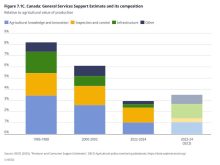A new lower-energy catalytic reaction could change the way ammonia-based fertilizer is made in the future.
Researchers at the U.S. Department of Energy’s Oak Ridge National Laboratory say the approach uses small carbon spikes, aided by lithium salt and the application of an electrical field.
“It’s a catalyst that operates completely based on the electric field; this has never been observed for nitrogen,” said ORNL’s Adam Rondinone, the study’s lead author. “We call it a physical catalyst — normally a catalyst is chemical.”
Read Also

Still hard to predict precise fertilizer payback
Despite decades of advances, international research finds no clear answer for where and when adding nutrient will fail to boost growth.
The study, published in Science Advances, reveals a type of catalyst that has been theoretically suggested but never demonstrated.
Ammonia, a compound made of one nitrogen atom and three hydrogen atoms, is typically produced through the energy-intensive Haber-Bosch approach. This process uses high temperature and pressure to split the stable bonds of molecular nitrogen, requiring large amounts of natural gas. The new approach is touted as being more energy efficient and environmentally friendly.
“Ammonia production is a huge problem that we need to find ways to address,” Rondinone said.
Industrial production of ammonia consumes an estimated three per cent of the world’s energy and generates up to five per cent of the world’s greenhouse gas emissions.
Unlike Haber-Bosch, the team’s process occurs at room temperature in a solution of water, dissolved nitrogen gas and lithium perchlorate salt.
The reaction’s low yield — about 12 per cent — limits its viability for industrial use right now, but the discovery of its unique electrochemistry may help develop alternative approaches to ammonia generation.















